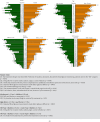Burden of Treatment in Children and Adolescents With Type 1 Diabetes Evaluated by Focus Groups
- PMID: 40539033
- PMCID: PMC12178731
- DOI: 10.1155/pedi/8833434
Burden of Treatment in Children and Adolescents With Type 1 Diabetes Evaluated by Focus Groups
Abstract
Objective: Taking into account the burden of treatment (BOT) should favor psychological fulfillment and adherence of young patients to treatment, which largely determines the quality of type 1 diabetes (T1D) control. To identify BOT components, the Ariane study carried out a focus group survey among 84 children and adolescents with T1D aged 12.6 ± 3.7 years. Research Design and Methods: Focus groups were organized in 10 pediatric diabetes centers, a qualitative research method that brings together a small group of patients to express their perception of treatment and answer questions in a moderated nonmedical setting. Results: A total of 3640 verbatim voicing children's concerns were recorded, transcribed, and analyzed by five working groups composed of pediatric diabetologists, specialized nurses, adults with childhood-onset T1D, and two groups from the civil society. Each group studied the verbatim separately to extract 24 main concerns summarizing BOT. These concerns fell into two distinct categories: concerns about physical, material, and care organization (N = 15) or psychological concerns (N = 9). A BOT score summed the number of concerns of each patient. The mean BOT score was 7.4 ± 3.3 (range 1-18). Gender had a prominent influence on concerns (p=0.002). Conclusions: The identification of common concerns expressed through focus groups provides a new tool for estimation of BOT in childhood T1D.
Keywords: adolescents; burden of treatment; children; focus groups; type 1 diabetes.
Copyright © 2025 Sophie Le Fur et al. Pediatric Diabetes published by John Wiley & Sons Ltd.
Conflict of interest statement
The authors declare no conflicts of interest.
Figures


References
Publication types
MeSH terms
LinkOut - more resources
Full Text Sources
Medical

